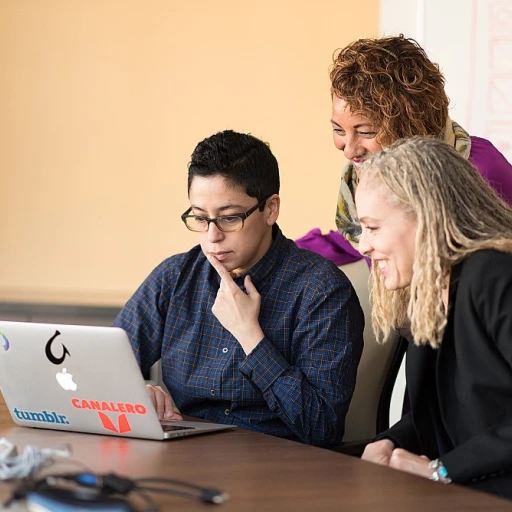Understanding the Importance of a Softer Approach
Creating a workplace culture that emphasizes a softer, more gentle approach can significantly contribute to building a culture of high performance. Such an environment fosters emotional intelligence, effective communication, and problem-solving skills among employees. When a company prioritizes soft skills alongside technical skills, it ensures a more harmonious and productive work atmosphere.
Emphasizing Human Connections
The importance of nurturing a workplace culture that values human connections cannot be overlooked. In a business landscape often dominated by hard skills and technical prowess, integrating soft skills allows for more comprehensive skills development. Skills such as empathy, active listening, and open communication reinforce the bonds between team members, leading to higher morale and improved teamwork.
Boosting Employee Engagement
Soft skills empower employees to engage in more fluid and effective communication, which is crucial for team success. Employers who encourage the development of these skills see enhanced collaboration and a more cohesive workplace environment. Engagement levels rise as employees feel valued and heard, leading to greater job satisfaction and organizational success.
Long-term Benefits for the Business
Investing time in learning and skills training programs that enhance soft skills equates to long-term benefits for any company. The development of these skills translates into better time management, critical thinking, and the ability to adapt to changing work dynamics more effectively. Ultimately, this approach lays the foundation for a resilient company culture that thrives amidst challenges.
Identifying Key Soft Skills to Promote
Promoting Valuable Soft Skills in the Workplace
Soft skills are increasingly recognized as essential for fostering a harmonious workplace and boosting organizational success. Beyond mere job-specific tasks, the development of skills like emotional intelligence, problem-solving, and effective communication can play a pivotal role in achieving a thriving and inclusive company culture. In today's rapidly evolving business landscape, understanding which key soft skills to promote among employees is paramount. These skills help bridge the gap between diverse team members and encourage open communication and teamwork. Unlike technical skills, soft skills emphasize interpersonal qualities and the ability to work effectively in collaborative environments. A primary focus for leaders should be on skills such as:- Communication: Cultivating the ability for employees to express thoughts clearly and listen effectively can reduce misunderstandings and enhance collaboration.
- Emotional Intelligence: Encouraging employees to recognize and manage emotions can lead to better conflict resolution and a more empathetic work environment.
- Problem-Solving and Critical Thinking: Equipping employees with these skills enables them to tackle challenges efficiently and adapt to new situations.
- Time Management: Teaching employees to prioritize and manage their time effectively contributes to productivity and reduces workplace stress.
Training Programs to Encourage Soft Skills Development
Effective Training Initiatives for Soft Skills Enhancement
Fostering a gentle workplace culture requires investment in soft skills development, and establishing effective training programs is essential. These initiatives not only support skills development but also reinforce the communication teamwork critical to organizational success. To develop effective programs, companies should first assess their current workplace culture and identify the specific soft skills that need enhancement. Common areas include communication, emotional intelligence, problem solving, time management, and critical thinking. Once key soft skills are identified, tailored solutions should be deployed. Training Program Design:- Tailor workshops to address specific soft skill gaps within teams.
- Incorporate interactive elements such as role-playing or group discussions to simulate real work challenges.
- Promote feedback sessions to allow employees to reflect on their progress.
Role of Leadership in Modeling a Softer Approach
Leadership's Role in Shaping a Compassionate Work Environment
In shaping a gentle workplace culture, leadership plays a crucial role in setting the tone for organizational success. Leaders who actively embody and promote soft skills such as effective communication, emotional intelligence, and active listening can greatly influence the work environment and employee behavior. By demonstrating these skills in their daily interactions, they set a benchmark for excellence that encourages team members to adopt similar approaches in their own behavior.- Modeling Effective Communication: Leaders who prioritize effective communication create an open environment for employees. This means being transparent in their communications and encouraging two-way dialogues, allowing feedback to flow freely. Real-time feedback is key in ensuring continuous improvement and promoting a culture of trust and respect.
- Time Management and Problem Solving: Leadership should also focus on managing their time effectively and demonstrating excellent problem-solving skills. These competencies not only enhance their own productivity but also serve as a learning opportunity for employees. By observing leaders who consistently manage their time and solve problems efficiently, employees are more likely to adopt similar strategies in their own work.
- Fostering a Culture of Learning and Development: Leaders who emphasize the importance of ongoing training and development programs send a clear message about the value of skill development. Offering opportunities for continuous learning and recognizing the achievements of employees can motivate them to pursue both soft and hard skills.
- Encouraging Teamwork and Collaboration: Leaders should strive to create a workplace environment that values teamwork and collaboration. By promoting communication teamwork, leaders can help reduce workplace conflicts and build stronger, more cohesive teams. This approach can also boost employee morale and engagement, contributing to a positive company culture.
Measuring the Impact of a Softer Workplace Culture
Assessing the Transformation of Workplace Environment
Incorporating a softer workplace culture inevitably leads to the question of how to evaluate its effectiveness. Measuring the impact hinges on understanding various aspects that are indicative of a positive organizational shift. Here's a look at how to gauge the influence of soft skills, communication, and leadership through realistic metrics and observations. Firstly, examining the behavior and feedback of employees can provide insight into the cultural climate. Regular anonymous surveys or feedback mechanisms are effective in capturing honest employee sentiments and identifying areas of improvement. These instruments help highlight the progress in skills development, particularly soft skills, and their application in daily interactions. Monitoring team dynamics and communication patterns also reveals important information. Improved collaboration, effective communication, and the team's ability to navigate conflicts or challenges collectively can be excellent indicators of the success of soft skills training programs. Furthermore, examining how employees demonstrate emotional intelligence and problem-solving skills in various situations can reflect the impact of these training initiatives. Trending employee retention rates and job satisfaction levels can also serve as measurable outcomes. A nurturing workplace environment, fostered by leadership, often leads to decreased turnover and higher employee morale. This, in turn, contributes to organizational success and impacts the company's bottom line positively. Lastly, assessing the alignment of employees' performance with business objectives is crucial. The soft skills that employees develop should translate into measurable results, like enhanced productivity and efficiency. Skills such as time management, critical thinking, and communication teamwork should help to drive projects forward and meet business goals more effectively. In essence, the transformation towards a softer workplace is a continuous process that requires regular measurement and iteration. For CHROs, keeping a close watch on these indicators helps to ensure that the intended goals of fostering a more supportive and collaborative work environment are being met.Overcoming Challenges in Implementing a Softer Approach
Addressing Challenges in Cultivating a Softer Workplace Culture
Promoting a workplace culture that emphasizes soft skills is fraught with challenges, but understanding these obstacles can lead to effective solutions. Here, we explore strategies to help organizations overcome these hurdles.- Resistance to Change: Shifting the company culture to prioritize soft skills such as emotional intelligence and communication teamwork often encounters resistance. Employees accustomed to traditional methods may view this transition skeptically. Encourage open dialogue and provide clarity on the long-term benefits for both the individual and the organization.
- Balancing Hard and Soft Skills: While promoting soft skills, it's crucial to maintain a balance with technical or hard skills. Comprehensive skills training that integrates both aspects will aid in achieving organizational success. Emphasize the value of each skill type through training programs.
- Leadership Engagement: The adoption of a softer culture heavily relies on leadership buy-in. Leaders must not only support but actively model these changes. Offering leadership training in effective communication and problem-solving can further support this initiative.
- Measuring Soft Skills Impact: Assessing the development and impact of soft skills in the workplace poses another challenge. Develop feedback mechanisms to gauge employee progress and the overall effect on team dynamics. Regular reviews can help refine the approach over time.
- Resource Allocation: Implementing a softer approach may require investment in training and development resources. It's essential to allocate time and finances effectively to support skills development without detracting from business operations. Prioritize programs that offer flexibility and immediate applicability.








